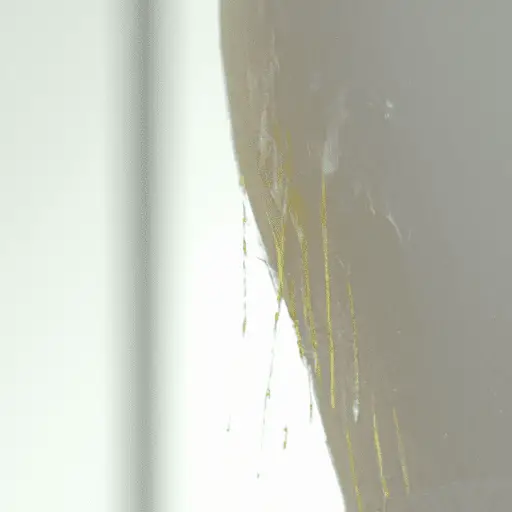Farewell to Excessive Sweating: Conquer Hyperhidrosis
-
Table of Contents
- Farewell to Excessive Sweating: Conquer Hyperhidrosis
- Key Takeaways
- Introduction: Understanding Hyperhidrosis
- Unveiling Hyperhidrosis
- Types of Hyperhidrosis
- Treatment Options for Hyperhidrosis
- Lifestyle Changes to Manage Hyperhidrosis
- FAQ Section: Hyperhidrosis Uncovered
- Conclusion: Taking Control of Hyperhidrosis
- Key Takeaways Revisited
Farewell to Excessive Sweating: Conquer Hyperhidrosis

[youtubomatic_search]
Key Takeaways
- Hyperhidrosis is a medical condition characterized by excessive sweating, affecting 2-3% of the population.
- There are two types of hyperhidrosis: primary and secondary, each with different causes and treatments.
- Several treatment options are available, including topical treatments, oral medications, iontophoresis, Botox injections, and surgery.
- Lifestyle changes can also help manage symptoms of hyperhidrosis.
- Consulting a healthcare professional is crucial for proper diagnosis and treatment.
Introduction: Understanding Hyperhidrosis
Hyperhidrosis, or excessive sweating, is a common disorder that can significantly impact an individual’s quality of life. It is a condition that often goes undiagnosed and untreated due to lack of awareness. This article aims to shed light on hyperhidrosis, its causes, types, treatment options, and how to live with this condition.
Unveiling Hyperhidrosis
Hyperhidrosis is a medical condition characterized by excessive and unpredictable sweating. Sweating is a natural body process necessary for cooling the body. However, people with hyperhidrosis produce sweat in amounts far greater than necessary to control their body temperature. According to the International Hyperhidrosis Society, approximately 2-3% of the population suffers from hyperhidrosis, with less than 40% of those affected seeking medical advice.
Types of Hyperhidrosis
There are two types of hyperhidrosis: primary and secondary. Primary hyperhidrosis is the most common type and is often hereditary. It usually affects the hands, feet, underarms, and face, with no apparent cause. Secondary hyperhidrosis, on the other hand, is caused by an underlying health condition like diabetes, menopause, thyroid problems, or certain types of cancer, or by a medication side effect.
Treatment Options for Hyperhidrosis
Several treatment options are available for hyperhidrosis. These include topical treatments (antiperspirants containing aluminum chloride), oral medications (anticholinergics), iontophoresis (a procedure that uses electricity to temporarily turn off the sweat glands), Botox injections, and surgery (thoracic sympathectomy). The choice of treatment depends on the severity of the condition, the body part affected, and the patient’s response to previous treatments.
Lifestyle Changes to Manage Hyperhidrosis
Along with medical treatments, certain lifestyle changes can help manage hyperhidrosis symptoms. These include wearing clothes made of natural fibers, avoiding spicy foods and caffeine, staying hydrated, and practicing stress management techniques like yoga and meditation.
FAQ Section: Hyperhidrosis Uncovered
- What triggers hyperhidrosis? Triggers can vary from person to person, but common ones include heat, stress, physical activity, and certain foods and drinks, including spicy foods and alcohol.
- Is hyperhidrosis a sign of serious disease? While secondary hyperhidrosis can be a sign of an underlying health condition, primary hyperhidrosis is not associated with any disease and is often hereditary.
- Can hyperhidrosis be cured? While there is currently no cure for hyperhidrosis, several treatment options can help manage the symptoms effectively.
- Does hyperhidrosis go away with age? Hyperhidrosis does not typically go away with age. In fact, without treatment, it can persist throughout life.
- Can hyperhidrosis be prevented? As primary hyperhidrosis is often hereditary, it cannot be prevented. However, lifestyle changes can help manage the symptoms.
Conclusion: Taking Control of Hyperhidrosis
Hyperhidrosis is a common yet often overlooked condition that can significantly impact an individual’s quality of life. Understanding the types of hyperhidrosis, its causes, and available treatment options is the first step towards managing this condition effectively. While there is currently no cure for hyperhidrosis, a combination of medical treatments and lifestyle changes can help control the symptoms. It is crucial to consult a healthcare professional for proper diagnosis and treatment.
Key Takeaways Revisited
- Hyperhidrosis is a common condition characterized by excessive sweating.
- There are two types of hyperhidrosis: primary and secondary.
- Several treatment options are available, including topical treatments, oral medications, iontophoresis, Botox injections, and surgery.
- Lifestyle changes can help manage hyperhidrosis symptoms.
- Consulting a healthcare professional is crucial for proper diagnosis and treatment.
[youtubomatic_search]


